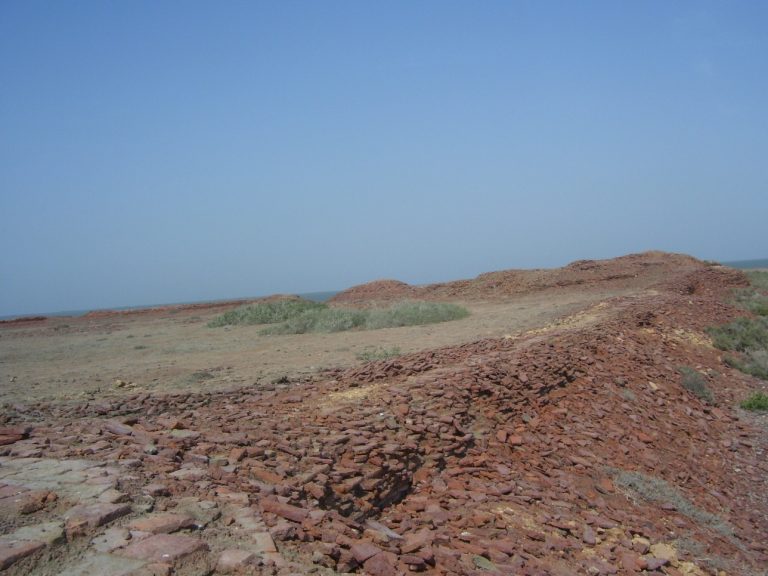
Author, who recently visited the ruins of Jakhi Bandar, a small deserted island in the open sea, opens a new debate.
Aziz Kingrani
The shoreline of Sindh had remained very busy for trade with eastern and western countries by sea routes from ancient times. The trade through many seaports continued up to early nineteenth century. The traders used to live at harbors with families under the supervision of appointed officials of government of the time. The forts and fortresses were also constructed at such ports for defense from possible attacks of foreign invaders.
Jaki or Jakhi Bandar was also one of those ports, ruins of which could be seen on a small island in the sea, in the proximity of Taluka Mirpur Sakro, District Thatta in Sindh province of Pakistan.
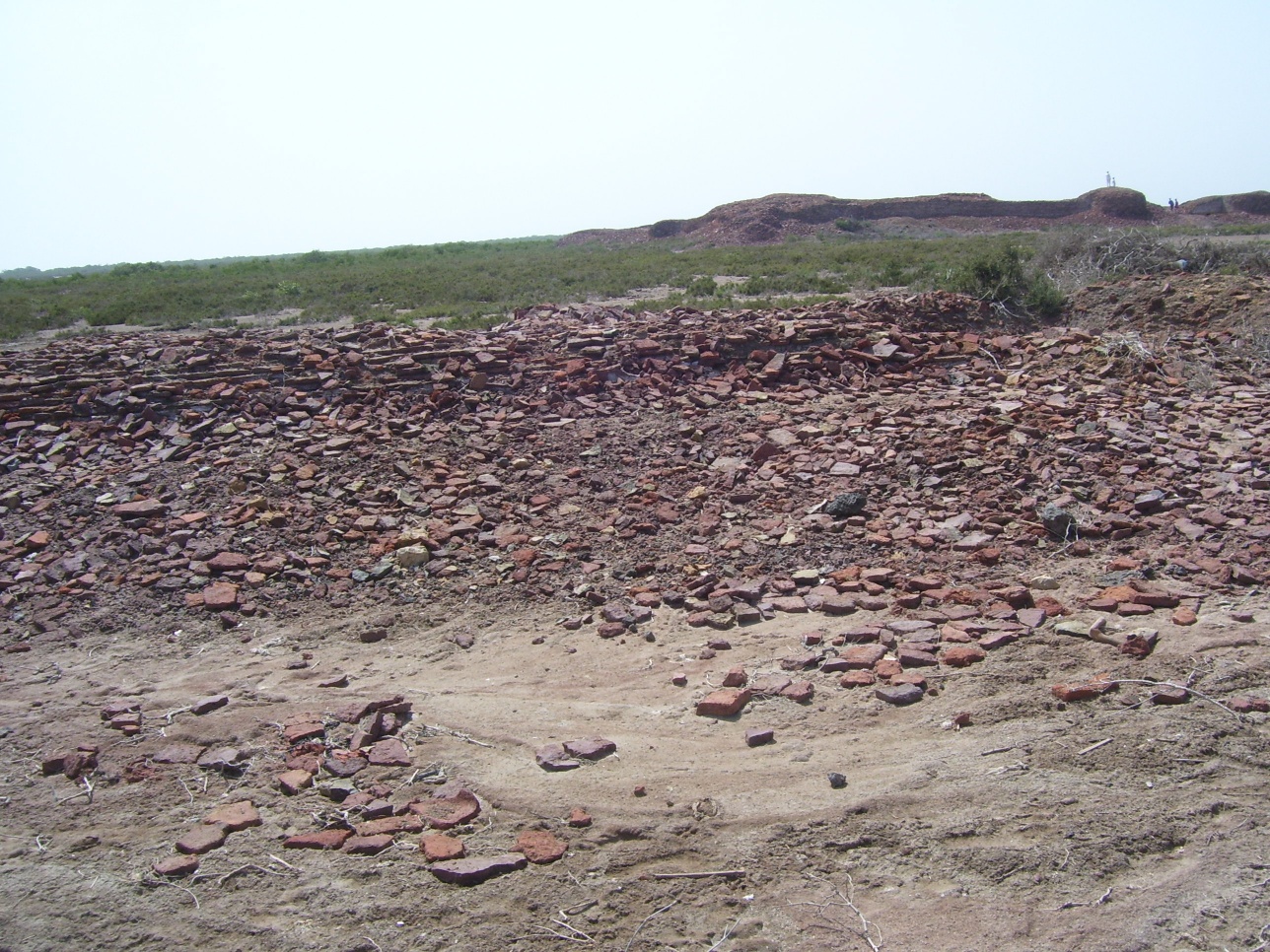
Most of the ancient ports and forts at Indus delta have disputed historical records. Native and foreign historians have mentioned confusing records and names of the forts. For instance, no one agrees to the suggestions that Banbhore and Debal were either same or were different ports, forts and towns. The same case is with Lahri Bandar, Juna Shah Bandar, Lari Bandar and Jaki or Jakhi Bandar. The majority of historians and archaeologists are puzzled about the names and locations of Jakhi Bandar, Debal and Lahri or Lari Bandar. The incorrect mention of name of Lari as lahri or Lahori starts from the text of Ibin Batuta. I think, while mentioning locations, the error also appears in Tuhfatul Kiram and Tareekh-e-Masoomi as well. All have mentioned these sea ports with more than one name due to unidentified locations. Probably, all ports like Debal, Banbhore, Jakhi (Lahri or Lari) Jaki and Juna Shah Bandar were located in close vicinities.
I recently visited the sites of Banbhore and Jakhi Bandar. I have endured to discuss with evidences that possibly, the earliest name of Jakhi Bandar was Debal. Later, after ninth century AD its name changed as Lari being located in Lar, at lower Indus delta. Ibin Batuta called it Lahri or Lahori Bandar. Al-Beruni mentions it as well. Afterward, it was called Jaki Bandar by local fishermen. Thus, up till now it is identified as Jaki or Jakhi Bandar.
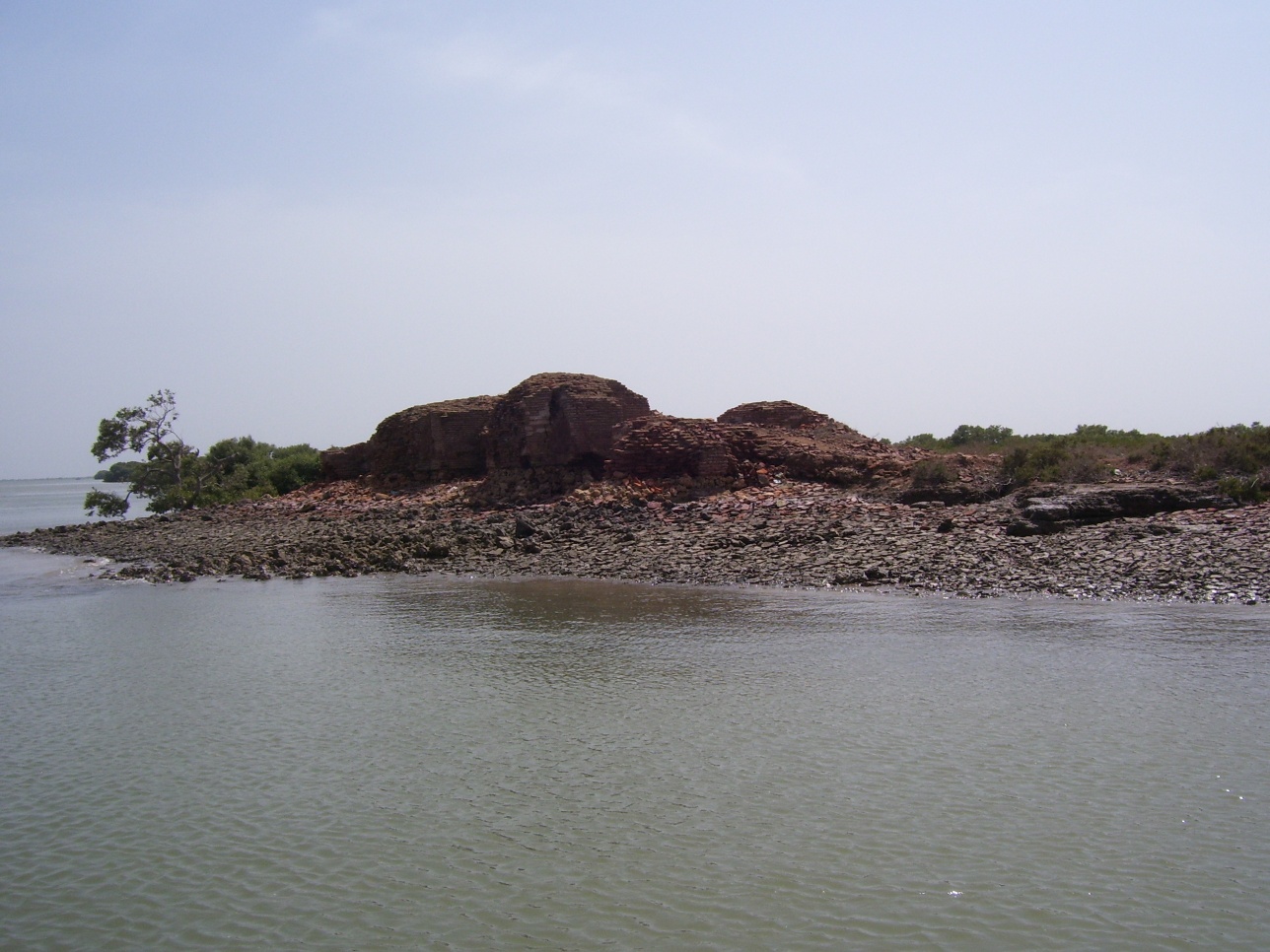
Jakhi Bander and fort is unexcavated archaeological site of Sindh. History is silent about Jakhi Bandar and rarely has been written in detail with historical and archaeological evidences about this ancient port and fort yet.
The historians have cited it as Lahri or Lari Bandar but now it is locally known as Jakhi Bandar. At present, it is situated at travel of approximately 50 kilometers from Karachi towards east-south and about 20 kilometers from Banbhore towards south-west while it is sited at a distance of 14 kilometers from ‘latte’ town of taluka Mirpur Sakro of Thatta District towards west. It would be found on an island surrounded by sea. Jakhi Bandar can easily be visited with the help of motor boat from Darya Pir harbor. The motor boat gets one and half an hour up to Jakhi Bandar from Darya Pir harbor. Jakhi Bandar fort is at a distance of 10 kilometers through watery route from Darya Pir towards west in deep sea.
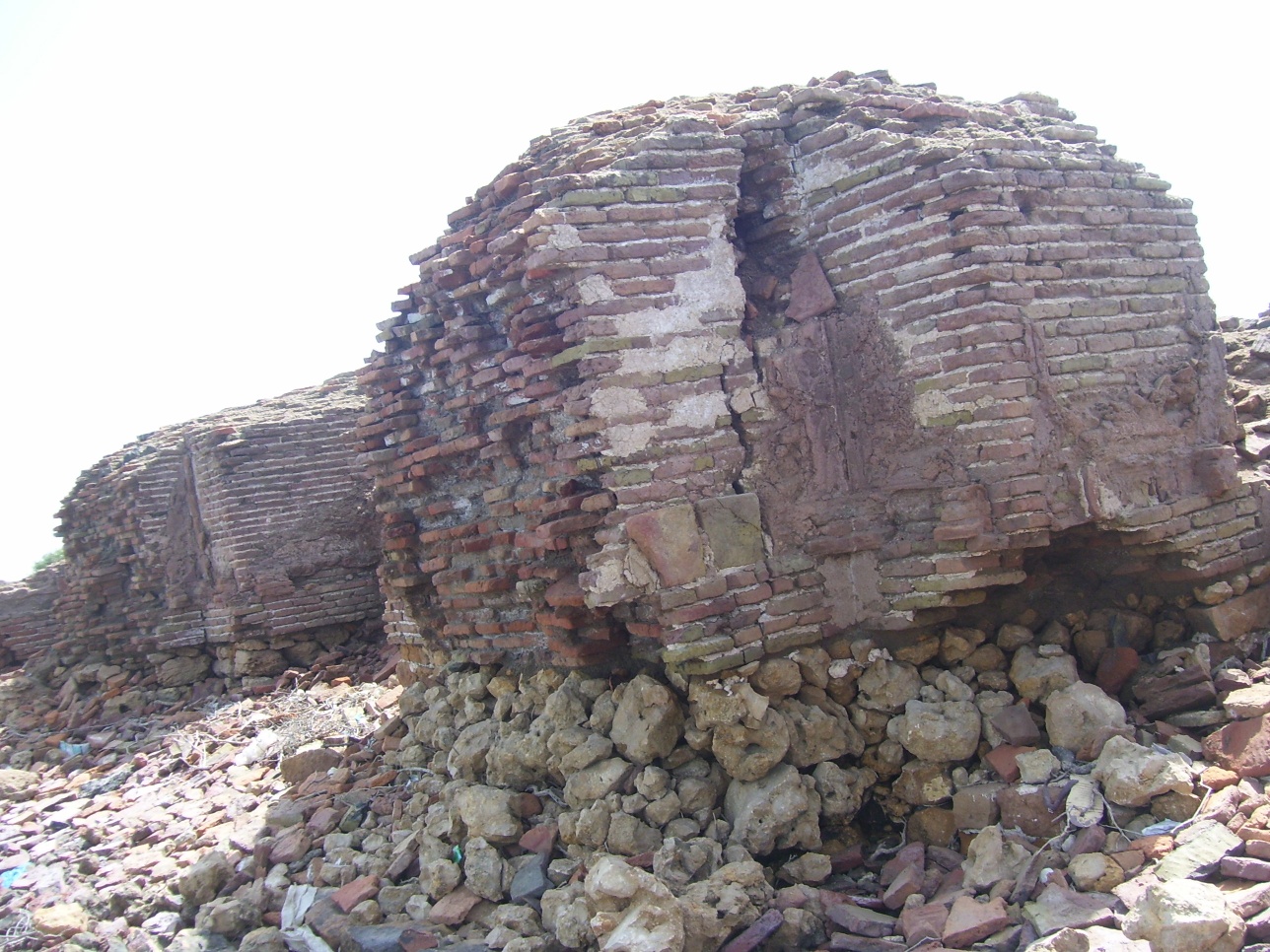
Jakhi Bandar fort’s ruins can be seen spread over an area of about four acres. Its walls are more than 5 feet in width and are built with red baked bricks. The measurement of some bricks is one square foot. Some bricks are larger than a foot. The base of fort is built with large stone slabs. The main gate of the fort is towards east. Two basins or entrenchments are built at both sides of main gate while entrenchments are also built at every corner of the fort. In the premises of the fort the other types of constructions were observed but all have been crumbled by sea erosion. Some constructions have been traced at outside of the fort as well towards south-east which seemed to be the residence of common people like a village. Here, the basin is also built. The terracotta of different periods is scattered at a large scale near these outside constructions.
All the walls of fort are now destroyed. Many early inscriptions were found on bricks. The inscriptions on bricks seem to be instance of post-Harappan. Most probably, in oldest times the fort was along sea shore at Indus delta. Subsequently, the sea eroded the area and fort was surrounded by sea. It seems defensive fort for traders’ community at harbor. Now Jakhi Bandar fort is fighting with the powerful tidal force of sea but unfortunately it will be defeated and in nearest future it will completely sink into sea and will disappear forever.
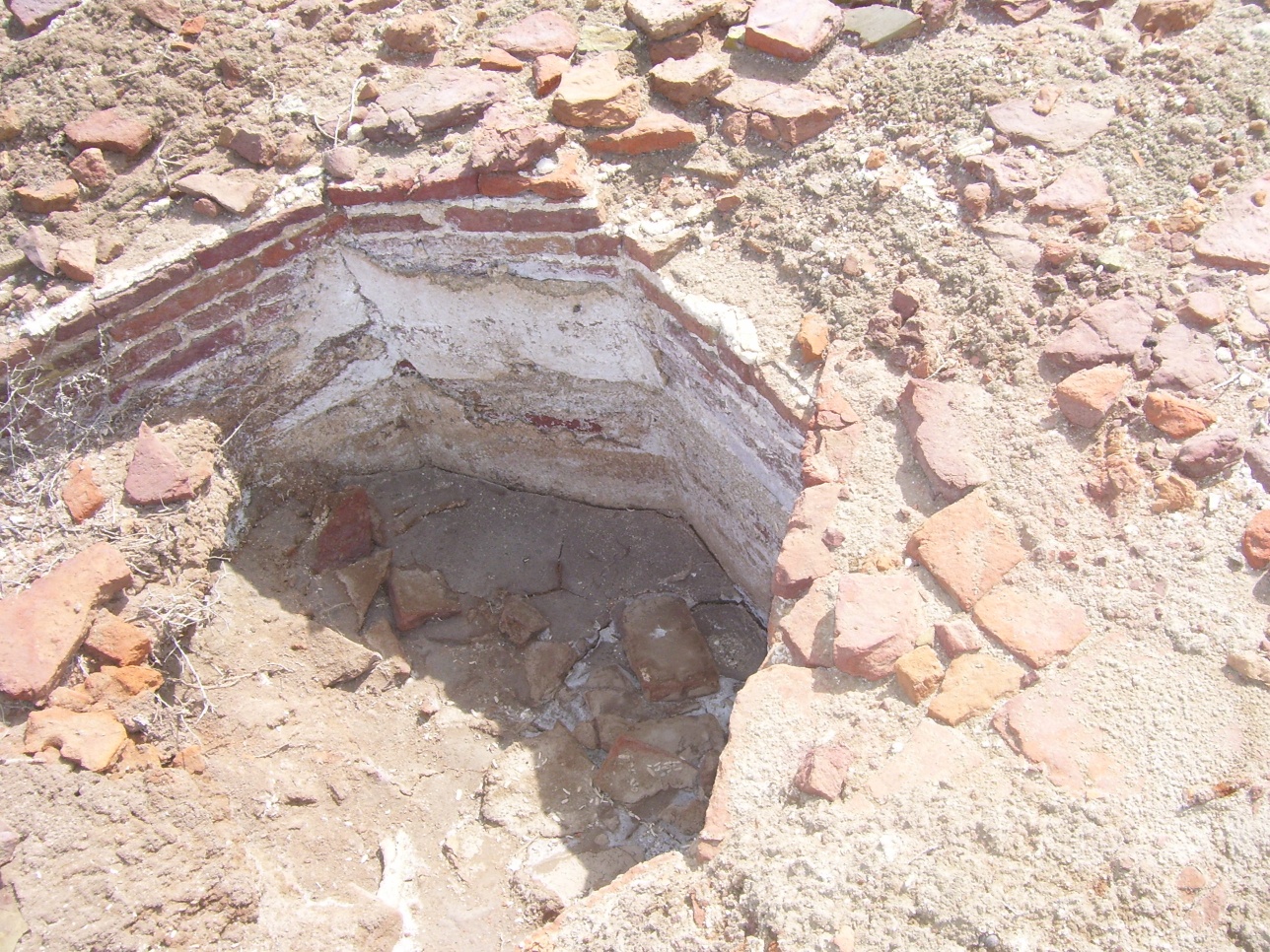
History reveals that in the surrounding area of today’s Jakhi Bandar many seaports were busy in lower Indus delta up to medieval period like Debal, Banbhore, Lahri or Lari, Juna Shah and others. Some consider Debal and Banbhore are same while some believe that Jakhi and Lahri are same. All are confused about the locations of Debal but some have described Jaki or Jakhi as Lahri or Lari. Some experts suggest that archaeological explorations in Indus delta have revealed the remains of fort structures dating from ninth/tenth centuries and onward. Barnes Ruth and Parkin David have written in book “Ships and Maritime Development Technology on Indian Ocean” (2015), that “at the site of Jaki Bandar in Indus delta, the ruins of fortress have been discovered beneath the existing structure.” Himanshu and Prabha Roy have mentioned in book Archaeology of Seafaring (1999) that “The Jaki is Lahori (Lahri or Larri) Bandar, today known as Jaki Bandar by fishermen. The oldest attestation of this toponym is to be found in al-Berun’s text of tenth century and quite probably belongs to this period”.
According to a journal “Pakistan Archaeology” by archaeology department of Pakistan, the site called Jaki Bandar by local fishermen corresponds as dominant fort in the area, in size and shape to Juna Shah Bandar. It further says that Lahri Bandar, Lari Bandar, Jakhi Bandar and Juna Shah Bandar are different names of same site (1993). Vohra describes in book ‘history culture and society in India and Asia (2003)’ that “archaeological explorations in the Indus delta, especially on island locally known as Jaki Bandar and referred to Lahri Bandar in ancient maps have revealed a fortress, neighboring mosques as well as numerous pottery workshops”. The journal of Asian Civilization by Taxilla Institute of Asian Civilizations has recorded that Lahori Bandar /Jaki Bandar suggests trade and maritime activities in Sindh from 10th century to 16th century and pottery from Lahori Bandar (Jaki Bandar) has been found in Persian Gulf and East African Coast (2002).
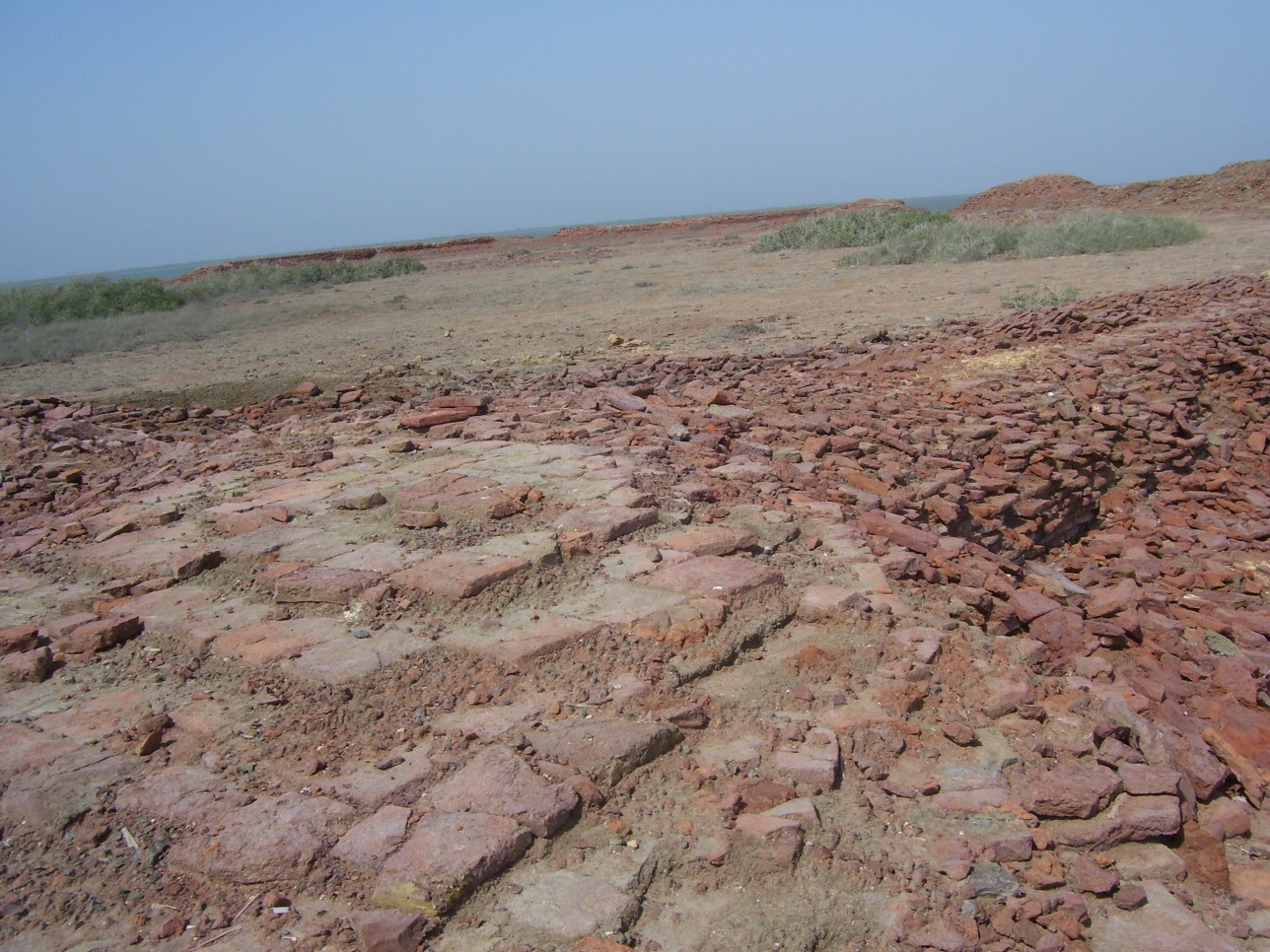
As for Debal, it is revealed in Janatul Sindh by Rahimdad Khan Molai Sheedae that “Debal or Deval is lastly mentioned in history during the regime of Soomra king Chanesar who made Debal as his capital. When the great traveler Ibn Batuta saw Debal (1333 AD), he wrote that the stones of broken idols were scattered over ground and one unbroken statue was erected in premises of Debal. Lahri Bandar which developed and became famous after Deval was at a distance of 5 miles from Debal and 20 miles into the area of sea at Indus delta. It was beautiful and prosperous city. Lahri was given to Alaul Mulk of Hirat as a Jageer by Muhammad Tughlaq”. Bhaart Joan L G and Sindhi Ghulam Hyder write in book “Pakistani Languages’ problems and prospects” published by National Institute of Pakistan Studies, QAU Islamabad (2003) state that “the coins of Muhammad Tughlaq were explored from Jakhi Bandar.”
However, M H Panhwar in book ‘Historical Atlas of Soomra Kingdom’ writes that “Debal and Mansoora were destroyed in 1224 and 1227 AD respectively during Soomra rule of Sindh.” While considering Debal as Banbhore, Ghulam Muhammad Lakho writes that “Jalaluddin Khuwarzam Shah had burnt Debal (Banbhore) in 1222 AD and then arose Lahri (Lari) Bandar”.
Whereas Narayan Saletore Rajaram is of the opinion in his book “Indian Pirates” (1978) that “Debal existed up to 892 AD and it was large mart and port”. M H Panhwar also includes that “Debal underwent around 978 AD due to rise of a number of independent states in central Asia, west Asia and northern Africa. At the same time he gives accounts that Debal was the main seaport of Sindh in 1150 AD”. About location of Debal, Qan’a writes in book “Tuhfatul Kiram” that “it should be noted that Deval (Debal) was fourth state (of Thatta) and the lands of Thatta were close to Debal.” Molai Sheedae states that “Debal was situated at present Pir Patho in Thatta.” Henry Eliot Miers includes in book “The History of India as told by its own historians” (1867) that “Debal and Lahri or Lahori (Lahri) Bandar or Lari Bandar, succeeded Debal as the sea port of Indus and is first named by al-Beruni, but Debal had evidently maintained its position down to the time of Jalaluddin’s incursion into Sindh in 1221 AD. In Ibin Batuta’s time, about a century later (1333 AD), we have no mention of Debal, which seems to have been superseded entirely by Lahori (Lahri) Bandar. Lahori (Lahri or Lari) itself been taken to be Debal. Tuhfatul Kiram, indeed, distinctly asserts that “what is now Bandar Lahri was in former time called Bandar Debal.”
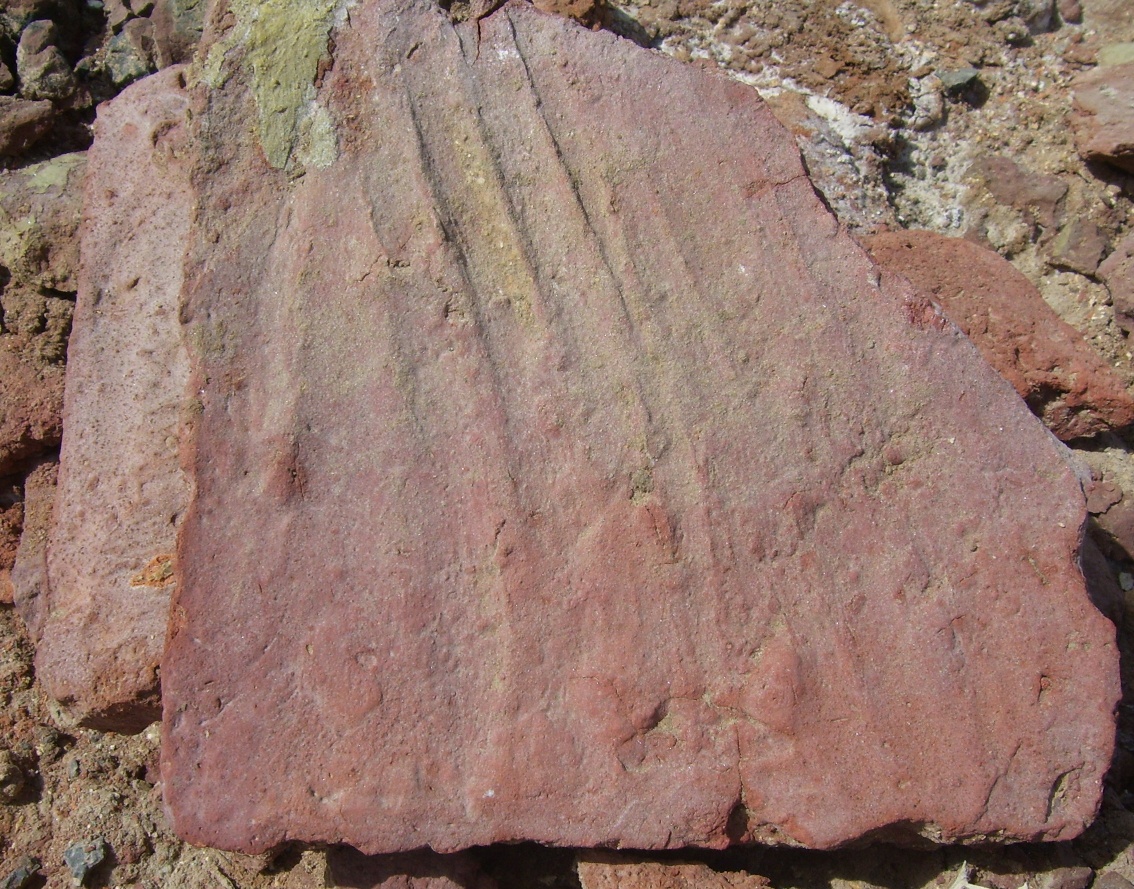
MH Panhwar also describes that “probably Banbhore is Barbarican or Debal on Kalri branch of Indus River. Kalri branch was immediately west of Makli hills by sharp turn to southwest. Kalri was main branch in 1525 AD and all early Lari (lower Sindh) Bandars were situated on it.” Abbot J opines in book “Sind: A reinterpretation of the unhappy valley” (1992) says that “it seems incredible that there could have been at the same time two cities (Debal and Lahri) each serving as ports of Thata•” MH Panhwar further says that Sindh’s trade with rest of the south Asia was mostly by boats either through Banbhore (Debal) up to 1224 AD or Lahri Bandar later on. There was cosmopolitan community of Persian Jew traders settled at Banbhore”. Abbot has quoted Major Raverty that “Lahri of Ibin Batuta was at the Junction of Indus River with sea eastward of Debal. Sindh’s trade must have decayed after 1224 AD due to the loss of Debal which probably was never re-occupied after its burning and soon afterward change of course of Indus which caused the establishment of new port of Lahri Bandar in the thirteenth or fourteenth century”. To Panhwar, there is an inference from Al-Beruni that Lahri Bandar Existed in early eleventh century”. It comes into view that about the location and period of Debal, no one historian is quite clear but Lahri or Lari Bandar survived with the name of Jakhi Bandar in later periods. From which period Lari Bandar was called Jaki or Jakhi Bandar? It is hitherto unanswered question. History doesn’t provide clue to solve it. However, Jakhi Bandar is close to site of Bhanbhore.
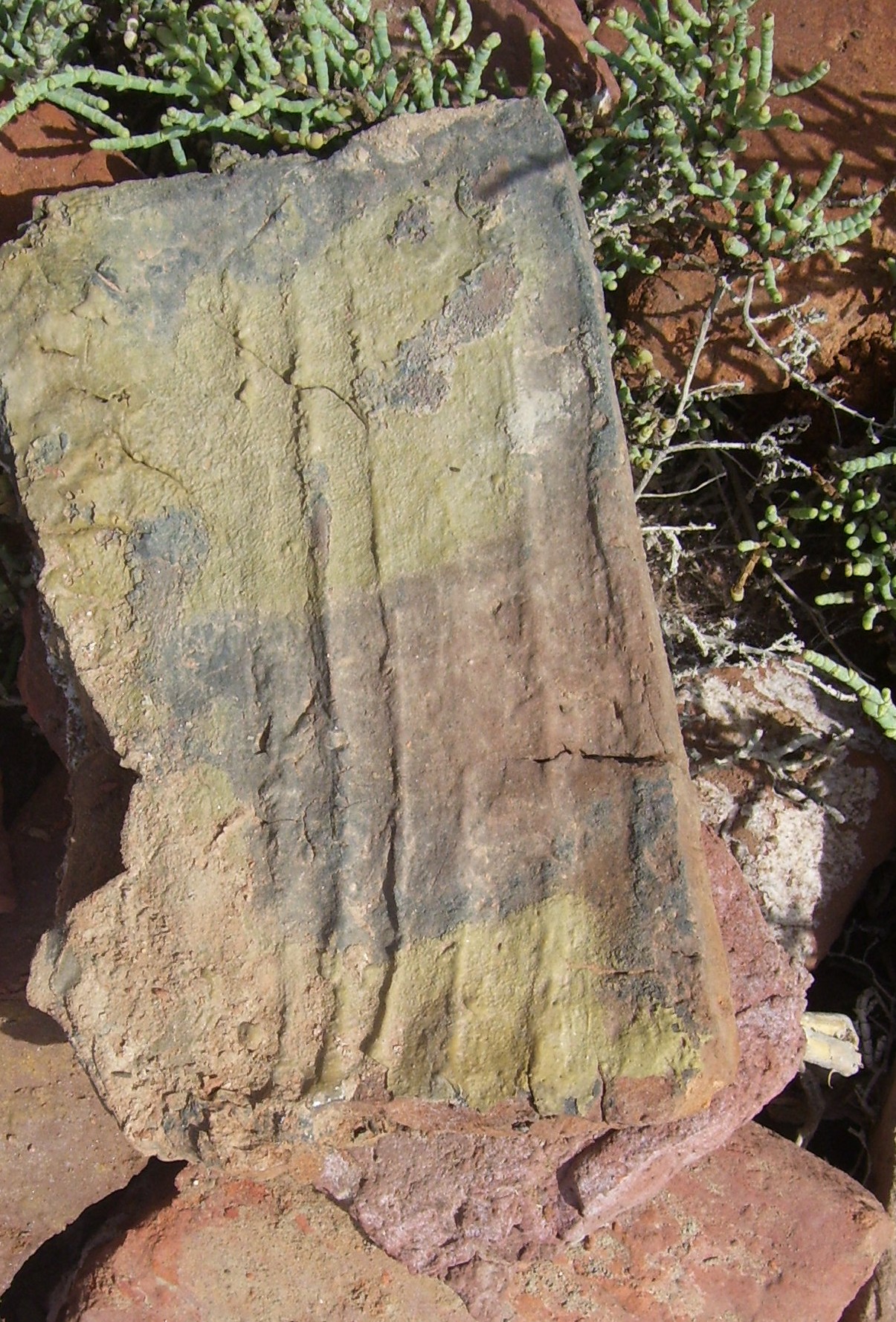
The statements of some historians make it obvious that today’s Jakhi Bandar is earlier Lahri or Lari Bandar. As for as Debal, its location and period is concerned, the historians have not provided certain and confirmed information with historical evidences. It is already conversed that all historians have given confused knowledge about Debal. Some think that Debal is Banbhore. In above discussion some historians have pointed out that Lahri or Lari Bandar was Debal. Possibly, later after burning of Debal, it re-occupied with name of Lahri or Lari Bandar. For example, prior to name Jakhi Bandar, it was known as Lari Bandar in past. Jakhi Bandar is ancient city and seaport of Sindh. It is believed that when al-Beruni and Ibin Batuta had visited Sindh, the Jakhi Bandar (lahri Bander) already existed. Evidently, Jakhi (Lahri or Lari) Bandar was very busy port and prosperous city before their visit. Jakhi (Lahri) Bandar might have been established as a sea harbor before the visit of al-Beruni and Ibin Batuta. Secondly, the ancient inscriptions of post Harappan are inscribed on the baked bricks of the Jakhi fort. Probably, these inscriptions are either in Brahmi script or other prevalent earlier local scripts. The inscriptions on most of the bricks used in the construction of the fort at port are evident to believe its ancientness and existence previous to Muslim period. I am of the opinion Jakhi Bander fort (Lari Bandar) is pre-Islamic archaeological site. Later, from time to time invaders occupied it. Thus, the remains of later attackers have been found from the site of Jakhi Bandar. Most probably, Jakhi Bandar and fort can be believed to be ancient Debal Bandar and city during Brahman dynasty in Sindh.
____________________
 Aziz Kingrani, hailing from village Haji Manik Kingrani, Johi, Dadu District, Sindh, Pakistan, is poet, short story writer, playwright and a research scholar. He has been contributing in the fields of history and literature since five decades. He has served as a professor as well. His 17 books are published in English and Sindhi language. His articles in English, Sindhi and Urdu have been published in various newspapers and magazines.
Aziz Kingrani, hailing from village Haji Manik Kingrani, Johi, Dadu District, Sindh, Pakistan, is poet, short story writer, playwright and a research scholar. He has been contributing in the fields of history and literature since five decades. He has served as a professor as well. His 17 books are published in English and Sindhi language. His articles in English, Sindhi and Urdu have been published in various newspapers and magazines.